|
|
Introducing Java Beans |
Reusable software components are designed to apply the power and benefit of reusable, interchangeable parts from other industries to the field of software construction. Other industries have long profited from reusable components. Reusable electronic components are found on circuit boards. A typical part in your car can be replaced by a component made from one of many different competing manufactuers. Lucrative industries are built around parts construction and supply in most competitive fields. The idea is that standard interfaces allow for interchangeable, reusable components.Reusable software components can be simple like familiar push buttons, text fields list boxes, scrollbars, dialogs, for example

Button Beans
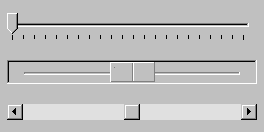
Slider Beans

Spinbutton Beans
These are the kinds of component sets, toolkits, or widget libraries traditionally sold by third parties. Lately we've seen vendors selling more complex software components like calendars,
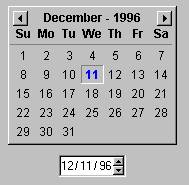
and spreadsheets:
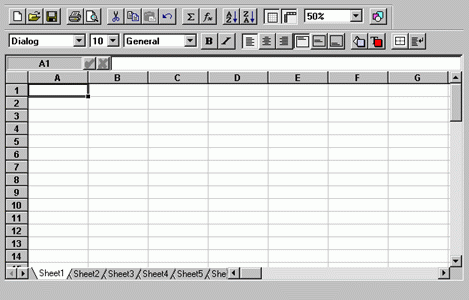
If you have used visual component assembly tools such as Visual Age, Delphi, Visual Basic, PARTS, Mojo, or even PowerBuilder, you are familiar with the notion of software components. Visual Basic Extensions (VBX's) were the first widely used software components, followed shortly by language-independent OLE Custom Controls (OCXs). UNIX programmers will be more familiar with widgets and toolkits.Reusable components add standardized interfaces and object introspection mechanisms to widgets allowing builder tools to query components about their properties and behavior. Software components need not be visible in a running application; they only need to be visible when the application is constructed.
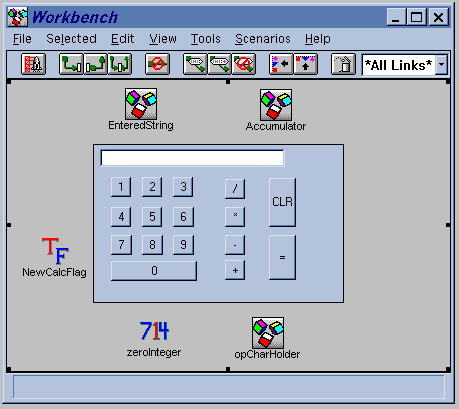
For example, the builder tool above shows a calculator component that is built from 16 button components, a text field component, and a panel upon which the buttons and a text display are placed. In addition, you can see five invisible components. These specific components hold values or strings used by the calculator for intermediate calculations, operation codes, and display strings, as well a boolean flag to determine when evaluation of a new expression is started.
A programmer can move, query, or visually hook together components such as numeric value holders, disk accessors, or network socket components with a mouse while operating a builder tool. However, such components would do their work invisibly while the application is running.
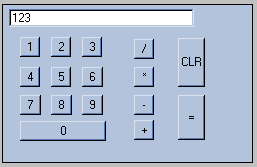
With Beans, you can purchase custom components for Java from third parties. You can also purchase builder tools or application contruction programs supporting Beans Application construction tools let you you to build Java applications by visually selecting components from pallets, panels, or menus, drop them into a form, or client window, and hook up events to event handlers using the mouse as your primary input mechanism.
Components can be nested and arbitrarily complex. For example, a calculator built from components becomes, itself, a component. Custom-built components are easily added to builder tool palettes. More complex components include barcharts,
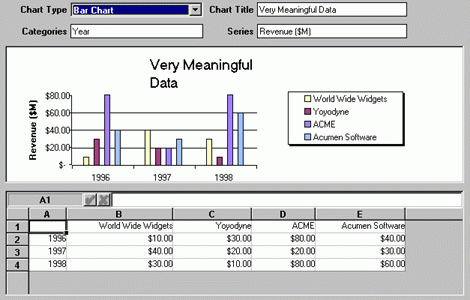
graphical diagram editors,
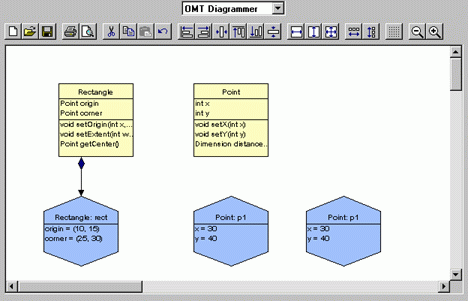
and word processors:
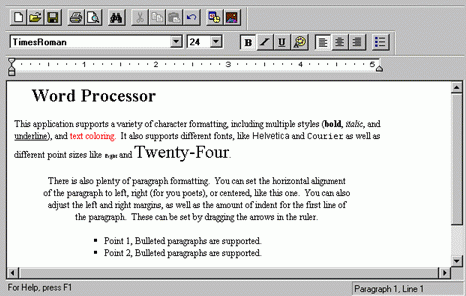
Beans, Widgets, Controls, and Components
Depending on your background, you may use different words to describe GUI components for a given software platform. If you come from a Windows background, you probably think in terms of visual controls, possibly Visual Basic Extensions (VBXs) or OLE Controls (OCXs) and now Active X Controls. If you're more accustomed to environments like Motif or X Windows, you probably think in terms of toolkits or widgets.Beans are to widgets as VBXs or OCXs are to native Windows controls. The main difference between Beans and native platform controls is that they define a design-time interface, which allows application designer tools, or builder tools to query components and ask them what kinds of properties they define, as well as what kinds of events they can generate or respond to.
In visual application builder environments Beans are sometimes referred to as reusable software components, or custom controls.
The main thing that distinguishes software components from standard Windows controls, or Motif widgets is their packaging. Software components or custom controls are packaged with design-time information (properties and methods) that allow builder tools to determine their capabilities.
A second difference is that end users, or third party suppliers can build custom beans independently of the maker of the GUI platform or operating system. These third-party components can then be distributed by IS departments to internal enterprise clients, or they can be sold as add-on components to anyone who uses builder tools to construct applications.
Beans or Class Libraries
It's logical to wonder: "What is the difference between a Java Bean and an instance of a normal Java class?"What differentiates Beans from typical Java classes is introspection. Tools that recognize predefined patterns in method signatures and class definitions can "look inside" a Bean to determine its properties and behavior. A Bean's state can be manipulated at the time it is being assembled as a part within a larger application. The application assembly is referred to as design time in contrast to run time. In order for this scheme to work, method signatures within Beans must follow a certain pattern in order for introspection tools to recognize how Beans can be manipulated, both at design time, and run time.
In effect, Beans publish their attributes and behaviors through special method signature patterns that are recognized by beans-aware application construction tools. However, you need not have one of these construction tools in order to build or test your beans. The pattern signatures are designed to be easily recognized by human readers as well as builder tools. One of the first things you'll learn when building beans is how to recognize and construct methods that adhere to these patterns.
Not all useful software modules should be Beans. Beans are best suited to software components intended to be visually manipulated within builder tools. Some functionality, however, is still best provided through a programatic (textual) interface, rather than a visual manipulation interface. For example, an SQL, or JDBC API would probably be better suited to packaging through a class library, rather than a Bean.
May Your Palette be Rich and Full
Still, Beans are tremendously useful, especially for programmers who consider themselves domain experts (financial analysts, scientists, linguists, bank loan officiers, investment analysists, factory process experts), rather than systems programmers.Ideally, enterprise programmers and domain experts will have a rich pallet of Beans from which to assemble Beans applications.
|
|
Introducing Java Beans |